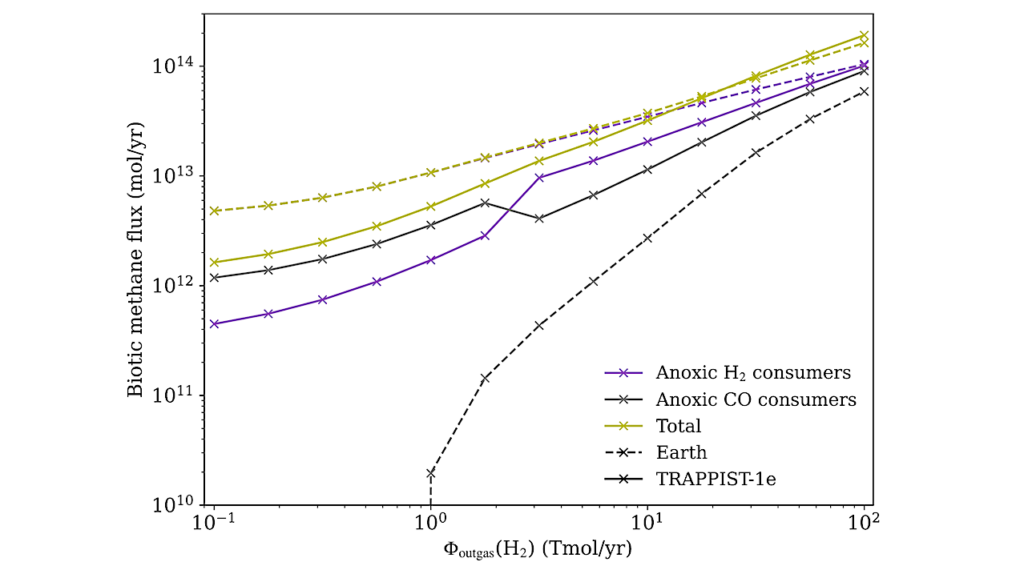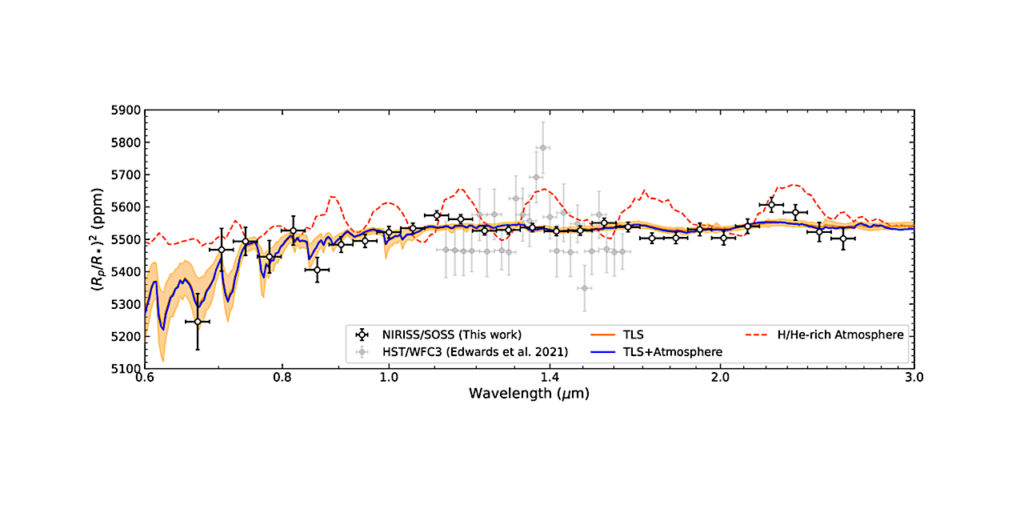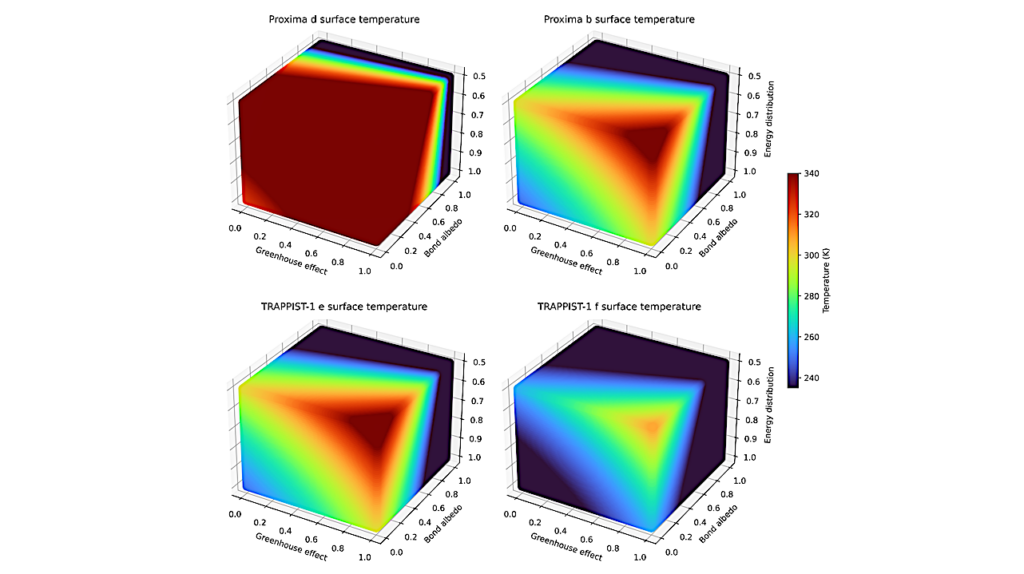Long-term Tidal Evolution Of The TRAPPIST-1 System

The ultracool M-dwarf star TRAPPIST-1 is surrounded by seven planets configured in a resonant chain. Transit-timing variations have shown that the planets are caught in multiple three-body resonances and that their orbits are slightly eccentric, probably caused by resonant forcing.
The current values of the eccentricities could be a remnant from their formation. Here we run numerical simulations using fictitious forces of trapping the fully-grown planets in resonances as they migrated in the gas disc, followed by numerical simulations detailing their tidal evolution.
For a reduced disc scale height h∼0.03–0.05, the eccentricities of the planets upon capture in resonance are higher than their current values by factors of a few. We show that the current eccentricities and spacing of planets d to h are natural outcomes of coupled tidal evolution wherein the planets simultaneously damp their eccentricities and separate due to their resonant interaction. We further show that the planets evolve along a set of equilibrium curves in semimajor axis–eccentricity phase space that are defined by the resonances, and that conserve angular momentum.
As such, the current 8:5–5:3–(3:2)2–4:3–3:2 resonant configuration cannot be reproduced from a primordial (3:2)4–4:3–3:2 resonant configuration from tidal dissipation in the planets alone. We use our simulations to constrain the long-term tidal parameters k2/Q for planets b to e, which are in the range 10−3 to 10−2, and show that these are mostly consistent with those obtained from interior modelling following reasonable assumptions.
R. Brasser, G. Pichierri, V. Dobos, A. C. Barr
Comments: Accepted in Monthly Notices of the Royal Astronomical Society
Subjects: Earth and Planetary Astrophysics (astro-ph.EP)
Cite as: arXiv:2207.05336 [astro-ph.EP] (or arXiv:2207.05336v1 [astro-ph.EP] for this version)
https://doi.org/10.48550/arXiv.2207.05336
Focus to learn more
Submission history
From: Ramon Brasser
[v1] Tue, 12 Jul 2022 06:29:33 UTC (4,599 KB)
https://arxiv.org/abs/2207.05336
Astrobiology,








